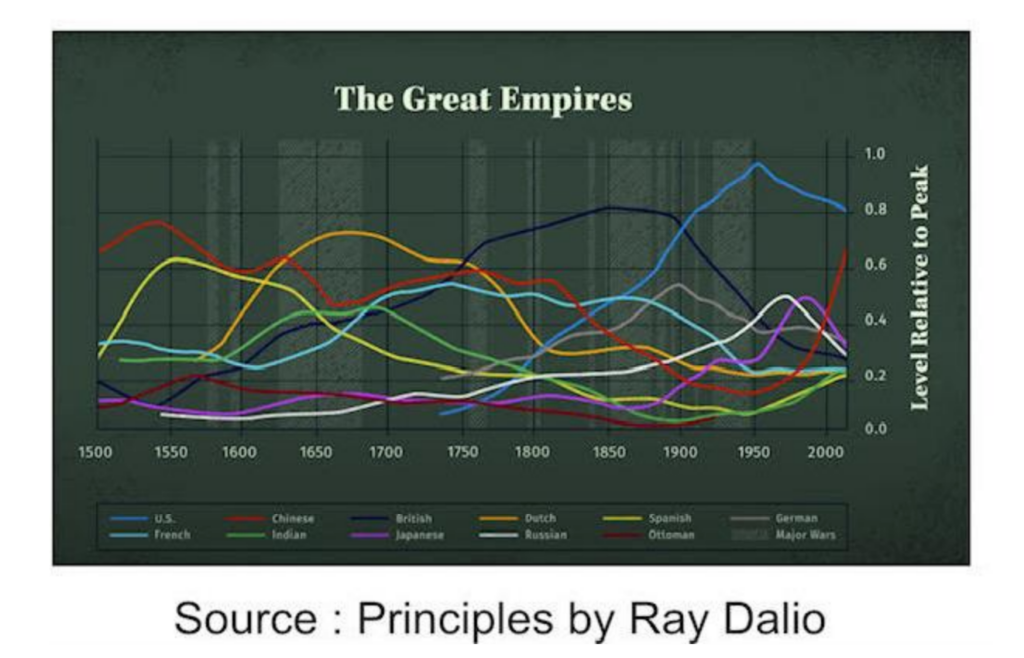In the intricate game of geopolitics, where nations jostle for dominance, every news ripple can signify an
impending tidal wave. The recent news from Israel, seemingly innocuous on its own, prompted me to
contemplate the larger undercurrents of our era. Might we be at that rare historical inflection point
where the scepter of global leadership changes hands? Which nation will shape the contours of the next
century?
China, with its meteoric rise, undeniably presents itself as a worthy contender to the crown. The nation’s
ambitious strides have not only astonished observers but also raised inevitable comparisons to the
reigning global titan, the United States. Yet, to understand the depth of this rivalry and to predict the
outcome, one needs a nuanced framework.
Enter Ray Dalio’s transformative insights in his seminal work, “Changing the World Order.” He postulates
eight pillars that define a nation’s readiness to ascend to global leadership:
- Education
- Competitiveness
- Innovation and technology
- Economic output
- Share of world trade
- Military strength
- Financial center strength
- Reserve currency status

A closer inspection reveals that China might not have the upper hand in the duel for supremacy.
Specifically, they falter on two crucial fronts: education and reserve currency status. These gaps aren’t
mere blemishes; they hint at profound social challenges that might thwart China’s imperial aspirations.
Couple this with the prevailing global mistrust towards China, and their path to reserve currency
dominance seems strewn with obstacles.
However, for the U.S., this isn’t a moment for complacency. The playbook for continued dominance is
clear: it lies in bolstering innovation and technology. But the bedrock of such advancements is a robust
education system, which, for the U.S., might be due for a foundational reassessment.
Dalio’s meticulous analysis provides a potent lens to view this. He remarks, “The biggest thing affecting
most people in most countries through time is the struggle to make, take, and distribute wealth and
power.” He underscores how those with wealth invariably control the means of its production and
collaborate with political powerhouses to shape the rules.
By considering his empirical data spanning across nations and epochs, a pattern emerges. The trajectory
of a rising empire is almost algorithmic: enhanced education catalyzes innovation and technology. This,
in turn, amplifies a nation’s share in global trade and military prowess, bolstering its economic output.
And as this crescendo builds, the nation cements its place as a financial hub, eventually leading its
currency to achieve reserve status.
Today, we stand at the precipice of history, where the tectonic plates of global power are shifting. The
choices made now, especially by the U.S., will determine the world’s trajectory for the next century. The
clarion call is unmistakable: for sustained dominance, the focus must return to the foundational pillars of
education and innovation
Only time will unveil the next global leader. But the contours of this grand contest are becoming
increasingly clear. The question remains: will nations heed the lessons of history and chart their course
accordingly?


